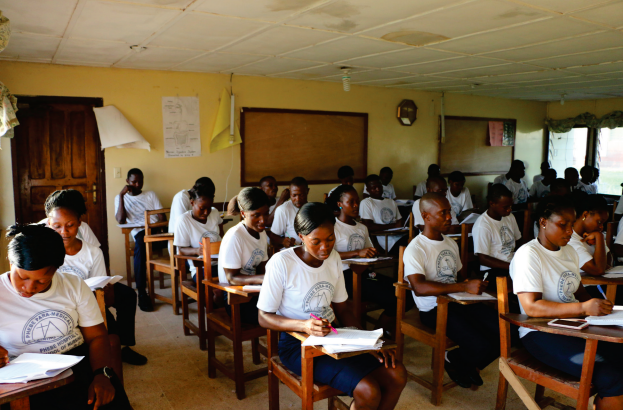MCSP HRH Liberia Gender-Responsive Teaching Methods: Facilitator's Guide

"Teachers' personal attitudes and beliefs related to gender norms influence their interactions with students, which ultimately impact students' academic learning and performance."
The Gender-Responsive Teaching Methods facilitator's guide is designed to help instructors understand and address gender and its impacts on learning. It was developed for the United States Agency for International Development (USAID)'s Maternal and Child Survival Program (MCSP)/Human Resources for Health (HRH) project in Liberia, which works to improve health workforce readiness by increasing the quality of instruction at pre-service training institutions and by strengthening the learning environment at pre-service training institutions and clinical/practicum teaching sites. A key component of these efforts is to improve retention of female students by promoting gender-responsive teaching skills and gender-sensitive teaching environments, through the training of faculty and preceptors (health practitioners who supervise students in a clinical setting) on gender-responsive teaching methods.
The facilitator's guide includes three sessions (5.5 hours total) to equip faculty and preceptors with the knowledge, skills, and attitudes to ensure equal participation of and opportunities for all genders:
Session 1: Introduction to Gender
Session 2: Introduction to Gender-Responsive Teaching Methods
Session 3: Creating a Gender-Responsive Academic Institution
The guide includes session plans, PowerPoint presentations, and handouts.
Key strategies promoted include:
- Creating an encouraging environment for female students to participate and speak in class more often;
- Ensuring the institution has a sexual harassment policy in place;
- Putting in place safety mechanisms to protect female students (e.g., transport late at night);
- Ensuring that classrooms, lesson plans, and course materials are free of gender stereotyping and bullying language;
- Ensuring a gender balance in instructors and the institutions' leadership;
- Addressing the needs of vulnerable students (e.g., providing scholarships or small stipends to students in need);
- Monitoring gender-disaggregated enrolment, retention, and performance data;
- Rewarding students who have made the most progress over time; and
- Encouraging male students to challenge harmful gender norms and behaviours and to support female students to excel.
56
MCSP website, October 3 2019.
- Log in to post comments
